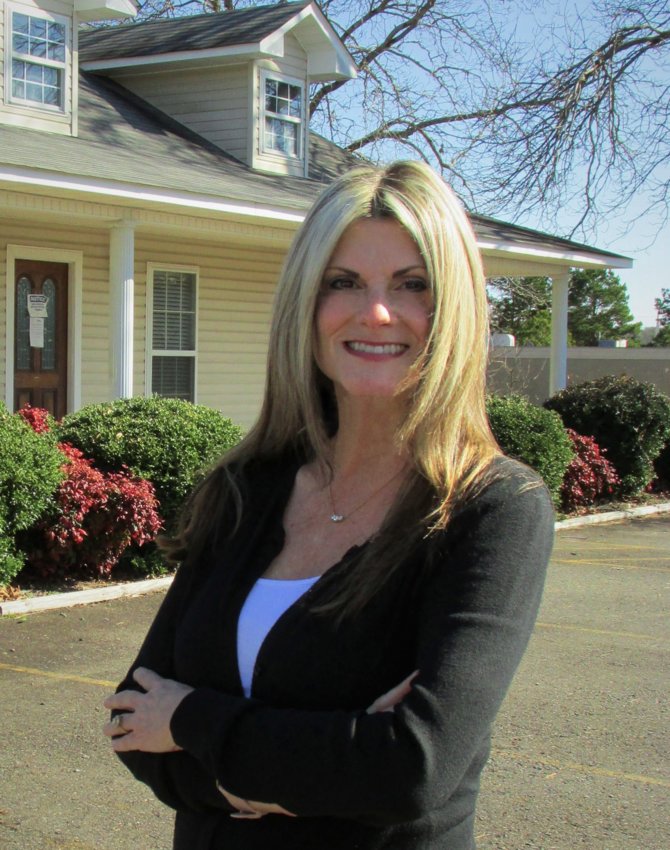Gannett remains at the top of the leaderboard for newspaper ownership. It publishes over 1,000 weekly titles and more than 100 dailies, amassed over the years through independent acquisitions and headlining mergers. But the company turned heads in the newspaper world when it recently began selling off some of those newspapers, mostly small-market and community titles that local owners were eager to buy.
This past August, Gannett’s CEO Mike Reed granted an interview to local media and advertising analyst Gordon Borrell (Borrell’s Local Marketing Trends Podcast, Episode 54). The conversation began with accolades for Gannett’s favorable market metrics. Print advertising and marketing services were up; subscriptions were up, and so, too, were retention rates and Revenue Per Unit (RPU). “They all look really, really strong,” Borrell said.
They spoke of Gannett’s recent five-year $90 million deal with Tipico, Germany’s largest sports gaming developer. The company wants to expand to the United States and banked on Gannett’s market penetration to gain traction.
“I think we’re the best media company in the U.S. to help a company like Tipico grow,” Reed said. Borrell asked him if he believed Gannett’s local-market news outlets helped seal this deal.
“I think it was a huge factor,” Reed said. Still, Gannett has been selectively selling off some of its local newspapers. Borrell pressed Reed on whether Gannett’s newspaper-acquisition days were in its wake. Reed acknowledged, “Yes. We have sufficient scale.”
Selling Local

Dirks, Van Essen & April partner Sara April has brokered several deals for Gannett in the past year and a half, in which her client sold newspapers to new, local owners. She described the current mergers-and-acquisition landscape as "dynamic," noting that buyer trends have changed in the past three years. Before that, the industry saw a lot of large corporate owners buying newspapers. Then, just a few years later, some of those organizations, including Gannett, are now selling off some of them, especially local titles.
“Since July, we’ve had four announcements — four separate transactions where newspapers are going back into the hands of local owners,” April said.
Though April wasn’t at liberty to discuss the terms of any of these sales, she spoke about the typical due diligence when a prospective buyer and seller begin their negotiations. "Buyers will look at financial statements; they're going to look at current staffing levels and at the operations," she said. "They'll look at the systems they're using, like the type of software. That helps the buyer assess whether they can fold a paper into their existing systems or if they'll require additional infrastructure. They’ll look at year-to-date results and at least two years of prior financials. They’re looking at the trend line of the company.”
She noted that Gannett has been strategic about which newspapers to sell. "All the markets are typically smaller. Look at the size of the towns. That has been the charge: To find quality local companies, with high regard for journalism, to take ownership of these newspapers so they can continue to serve their communities,” she explained.
Lark-Marie Antón, senior vice president, corporate communications for Gannett/USA TODAY NETWORK, echoed that sentiment in a written statement sent to Editor & Publisher (E&P). "Our mission is to empower communities, and our decisions are driven by our commitment to best serve them. In many instances, we have been approached by prospective buyers and carefully considered what was best for both our company and the community."
But, she added, "It takes time, and it takes work."
"It shows a commitment by Gannett that these franchises continue — many of them dating back more than 100 years. It is a fascinating trend to see these local owners re-emerging to buy papers," April said. "It is great for the industry, and it's a really positive story. These are going to be successful deals for the buyers."
E&P reached out to a few of the new owners to see if her prediction proved prophetic.
Familiar Aspirations

Todd Neves is the president at Panama City, Florida-based Neves Media Solutions Group, a family-owned digital marketing and advertising agency. This year, the company got into the newspaper business, but the intersection of content, advertising and technology was familiar territory.
Neves’ younger brother expressed political aspirations back in the 1990s, and the family rallied to support his campaign, including developing campaign materials. They hired an agency, which underperformed, and the Neves brothers — who had a talent for tech — did the work themselves. Another politician took notice and hired them to work on his campaign, too.
“When it came time to write us a check, we had to come up with a business name. We took the check to a bank and created a partnership account. We were talking with the bank manager, and he said, ‘You should be our agency!’ I said, ‘What’s an agency?’ Within 15 minutes of being in business, we signed that $150,000-a-year account,” Neves said.
In 2021, Neves Media Solutions Group bought four newspapers from Gannett, all in northwest Florida: Washington County News, Holmes County Times-Advertiser, Port St. Joe Star and the Apalachicola Times.
“Though Panama City is relatively technologically savvy, many of the rural communities around it don’t have access to high-speed internet, so there’s still a print-focused community,” he said.
One of Neves's first changes was opening the offices, which Gannett had closed during the pandemic.
“I wanted coffee pots in the lobbies,” he said. “I want the old guy from down the street to be able to come in and bend your ear. If he wants to buy a paper and give you 50 cents, take his 50 cents. So, we opened up the offices on day one and made a lot of effort to sponsor events in the communities we’re a part of — to really engage those communities, as a local paper should.”
Readers immediately noticed a shift in editorial tone, which was right of center, Neves explained.
“We brought back Ron Hart, who Gannett had gotten rid of. He’s an interesting columnist, a libertarian who tends to get conversations stirred up,” he said. “Northwest Florida is a more conservative market, so we’ve embraced the market we’re in, in terms of our editorial content.”
Neves Media also hired and rehired reporters, energizing the newsrooms. “We’ve got 15 people on staff for the four properties,” Neves said. "I thought that was a lot. I've described the newspaper business as requiring more bodies to generate the same revenue I've ever generated in my other businesses. What I learned is that's actually pretty lean."
Neves' tech background proved invaluable in getting systems in place for the newspapers. They started with accounting systems and developed a cloud-based editorial workflow. And they built automated portals for obituaries and legal notices.
Neves said that the former owner's consolidations of resources and content created a disconnect with local readers. He’d like to rebuild those relationships.
"A good friend once said to me, 'If you can't drive by, go by on your way home from church, or get to a business that you're invested in within an hour or two; then you can't effectively run it.' When larger newspaper organizations manage from afar, they get further away from the customer, and the harder it is to be impactful to that customer," Neves said.
Local Content, Local Context

If there was anyone destined to one day own a newspaper, it was Tim Schmidt. The founder of Westplex Media Group began his career working as a sports editor and aspired to be a news editor. Instead, he set his sights on one day being a publisher and redirected his career path, shifting from the newsroom to the business side. “I had to learn how to increase revenue,” he recalled.
He started out selling ads and eventually became general manager of that title. "You have to sell the paper, whether you're the receptionist, the publisher, the editor or the sports reporter, so I always did that," Schmidt said.
He began exploring the idea of buying a newspaper. He spoke with brokers and even made a few offers. "We just couldn't get a deal done; the prices were still high," he said. "But I held out hope and thought, it's going to happen to one day. Then, lo and behold, three years ago, I bought the Montgomery Standard."
The Montgomery Standard was previously family-owned. "Out of the blue one day, I paid a visit to them. They were ready to walk out right then. They had financials ready for me and everything. They must've known what I was coming there for," he said. "We spent the next six months going over it all and came to an agreement. It was their willingness to work with me that got me started. I will always be grateful to them for that."
Schmidt acknowledged that the paper was losing money at the time, so he decided to focus on revenue and content immediately. First, he hired a new editor to expand the coverage. Then, Schmidt bought the newspaper where he'd spent much of his career — the Warren County Record. The following year, he made a play for the Mexico Ledger, a Gannett newspaper, and bought that, too.
“It was probably one of the better newspapers in the state,” he said of the newspaper’s heyday. “But it had just been abandoned by the corporate chains. It hadn’t been given the TLC it needed.”
The newspaper was founded as a daily. Over the years, the owners had reduced its frequency to three days a week and then to two. Schmidt said he's comfortable with a two-day-a-week schedule.
"So much of the content had been statewide news and national news, but if you're a newspaper coming out two days a week, readers can find all that information from so many other sources than a community newspaper," Schmidt said.
"They were running a lot of Associated Press content. So on day one, we stopped running Associated Press. I want us to focus on writing local stories about local people. I wrote a publisher's column the very first week, and what I said still rings true today: We want to see how many faces and names we can get into the paper every week."
They increased coverage, reporting on local organizations, sporting events, and school board and municipal meetings. In addition, they started a Saturday feature, "10 Questions With," a Q&A with a local resident or public official. "Everyone loves it. It's one of those ideas that I think we should do in every market," Schmidt said.
These weren’t the only changes.
“Subscribers were still paying the amount you’d pay for a daily newspaper,” he said. “They never changed the price. We immediately came in and dropped the price.” They also decreased the ad rates and hired some new staff.
In the past year, the Mexico Ledger prospered, and its owner chalks that success up to the company culture and how it sees its role in the community. Schmidt said they’ve doubled subscriptions in a year.
“A lot of these bigger companies want to make everything cookie-cutter, where every newspaper looks the same. But I know, from sales, that not every promotion you do in one place will work at the next spot. Since I worked with some corporate companies and worked for some family-owned newspapers, I thought I’d take the best of both scenarios, mesh them together, and we’d have a pretty good company that produces good community journalism,” Schmidt said.
When Editor & Publisher spoke with Schmidt in August, Westplex Media Group was preparing to buy another newspaper from Gannett, the Moberly Monitor-Index. Each newspaper has its own newsroom and dedicated staff, though some of the production roles are shared.
Asked if he hoped to buy other newspapers, Schmidt said it would have to be an excellent opportunity, that he prefers not to grow the company beyond its local focus. "I like to be hands-on, so I'm in contact with the staff every week. I know what's going on with our story budgets every week at each of the papers. But I have no vision of getting large because I think that's when you lose the local connection.”
He added, “We put all of our resources toward improving the content. Anything we can do to help the content, I really think that’s where we’ve got to go. I believe revenue falls in line when we have a good paper that people want to read.”
A Community’s Heart and Soul

Jennifer Allen worked in newspapers for 33 years — as regional ad director, general manager and publisher. In 2021, she added newspaper owner to her bio. On Feb. 16, she bought the Hot Springs Village Voice from Gannett, a newspaper where she’d spent the past 14 years. Gannett eliminated her publisher position in 2020. The very next day, she found herself in conversation with a Gannett executive, who made a simple suggestion: Why not buy the newspaper from Gannett?
"I said, 'I didn't even know that was an option.' He told me it might be and said I should think about it and offered to connect me with the right people at Gannett," Allen recalled.
She thought hard on it for about a week and took him up on his offer. Asked if she had any reservations about owning a newspaper, she said, "No, not at all. It was just what I was meant to do."
Allen consulted with several banks to explore lending options and develop a sound business plan.
Leading up to the deal’s close, she put suppliers and systems into place to support the workflow, circulation, advertising and production. “Of course, there are up-front expenses, and you have to be prepared for those. One thing I’m grateful for, about my time at Gannett, is that I learned how to manage,” she said. “Being a general manager, a publisher or regional ad director? Those types of roles allow you to be privy to what goes on at the paper. You see the P&L statements at the end of the month, so you are well aware of how it’s doing and what it takes to run a newspaper.”
Allen also had to rebuild the staff, which the previous owner had greatly diminished. "We're back at full staff and going strong," she said.
The weekly print edition publishes every Tuesday. In addition, social media channels and the website keep the readers informed with daily content. It has a circulation of 4,500 among the gated community it covers. The content is focused exclusively on local and association news, leaving the state and national reporting to other sources. Currently, the content is free, but Allen plans a paywall before the end of the year.
“Our community has been loving the paper being locally owned,” Allen said. “They have been so supportive.” When you speak to the paper’s new owner, she talks with humility about what she could accomplish, as if buying a newspaper was just something she had to do, but she may have saved it.
“This paper is my heart and soul,” she said.
Gretchen A. Peck is an independent journalist who has reported on publishing and journalism for more than two decades. She began her reporting career covering municipal government at a suburban Philadelphia daily and also served as an editor-in-chief/editorial director for a magazine publisher. She has contributed to Editor & Publisher since 2010 and can be reached at gretchenapeck@gmail.com.
Comments
No comments on this item Please log in to comment by clicking here